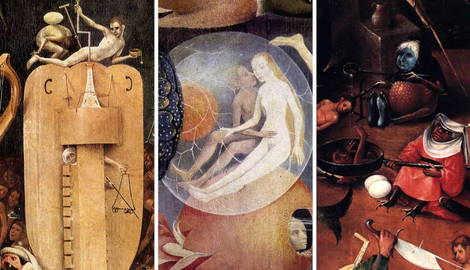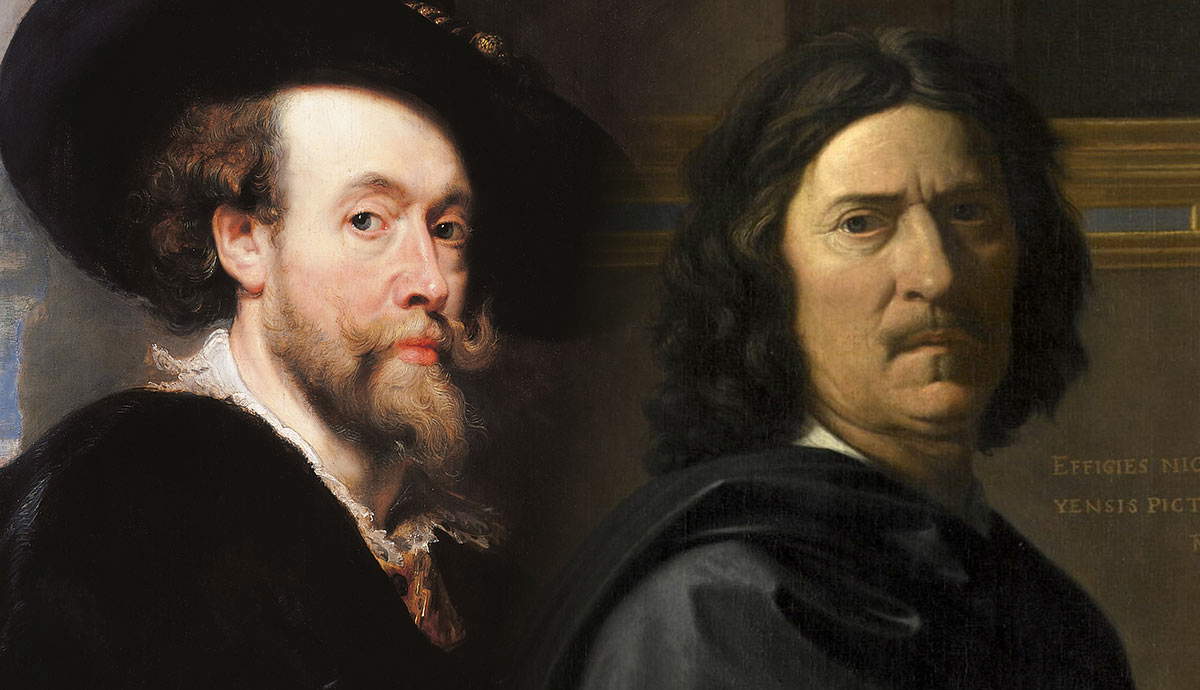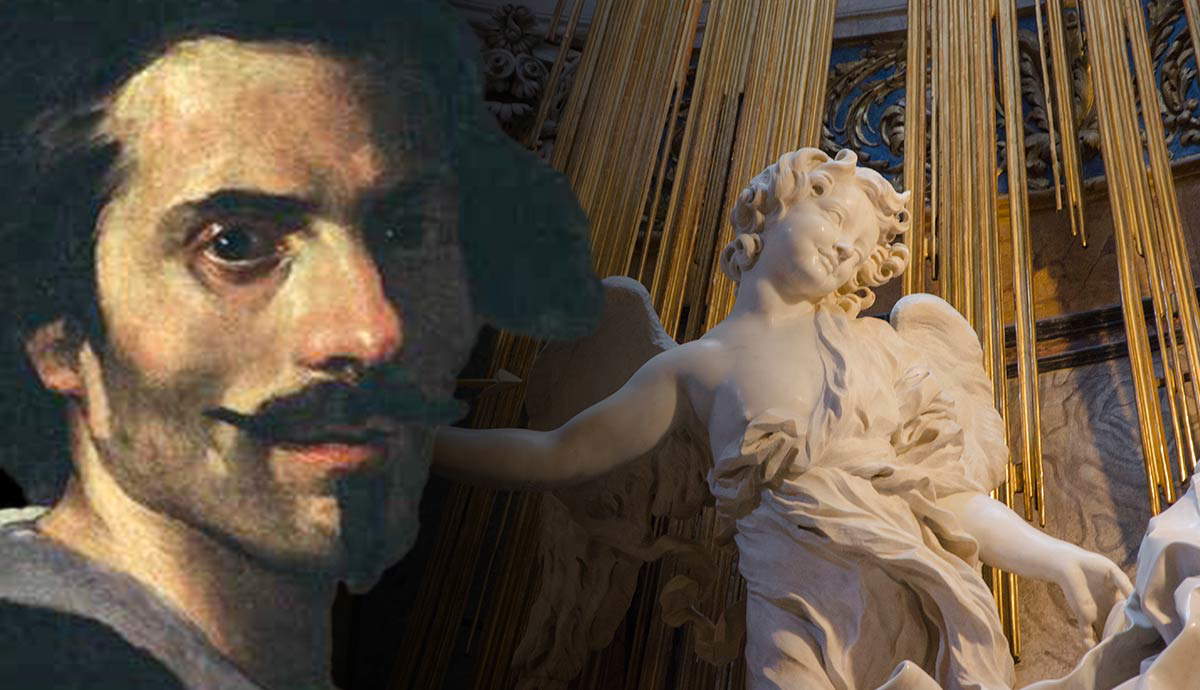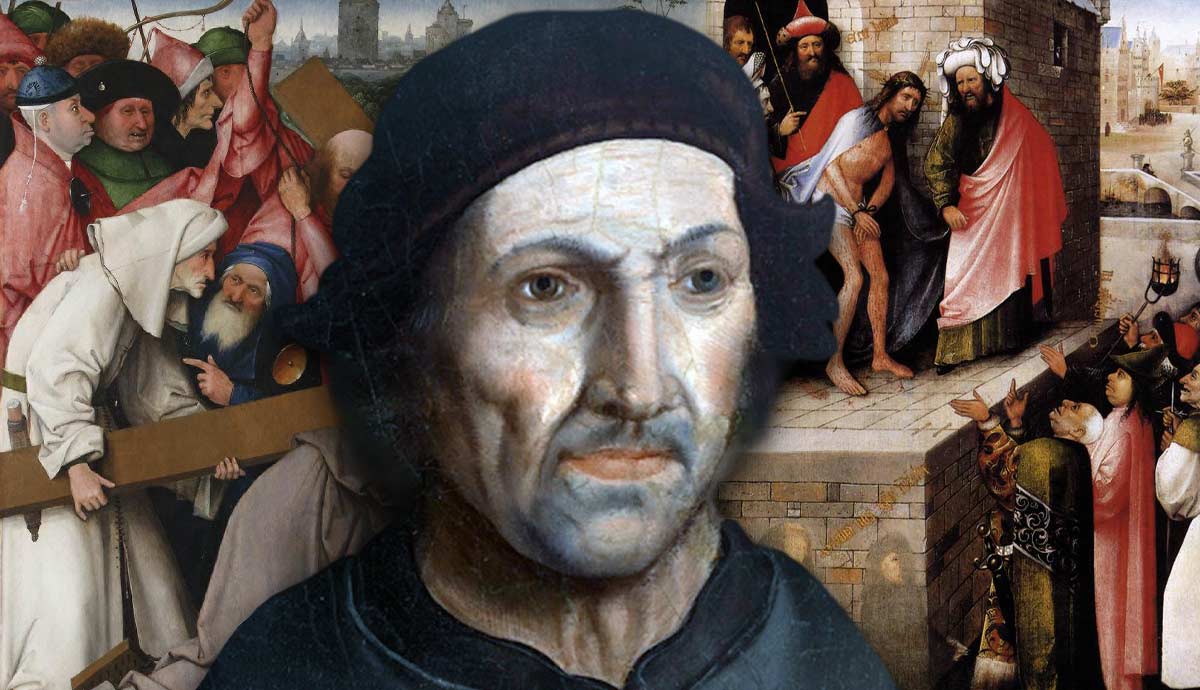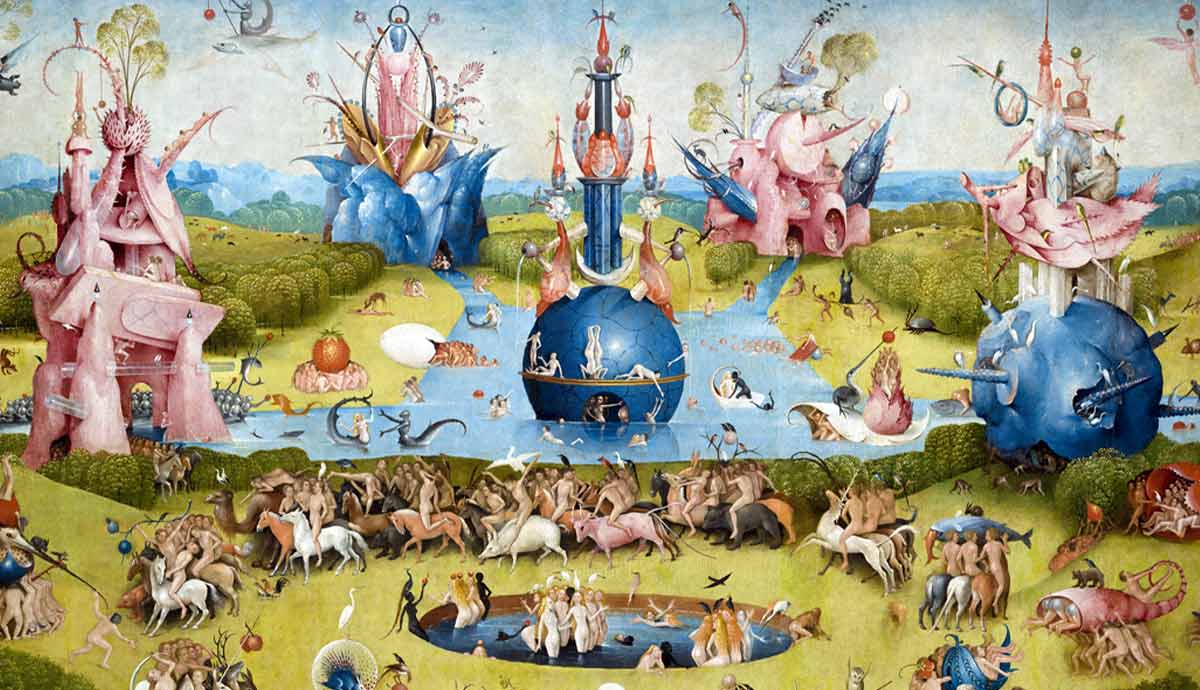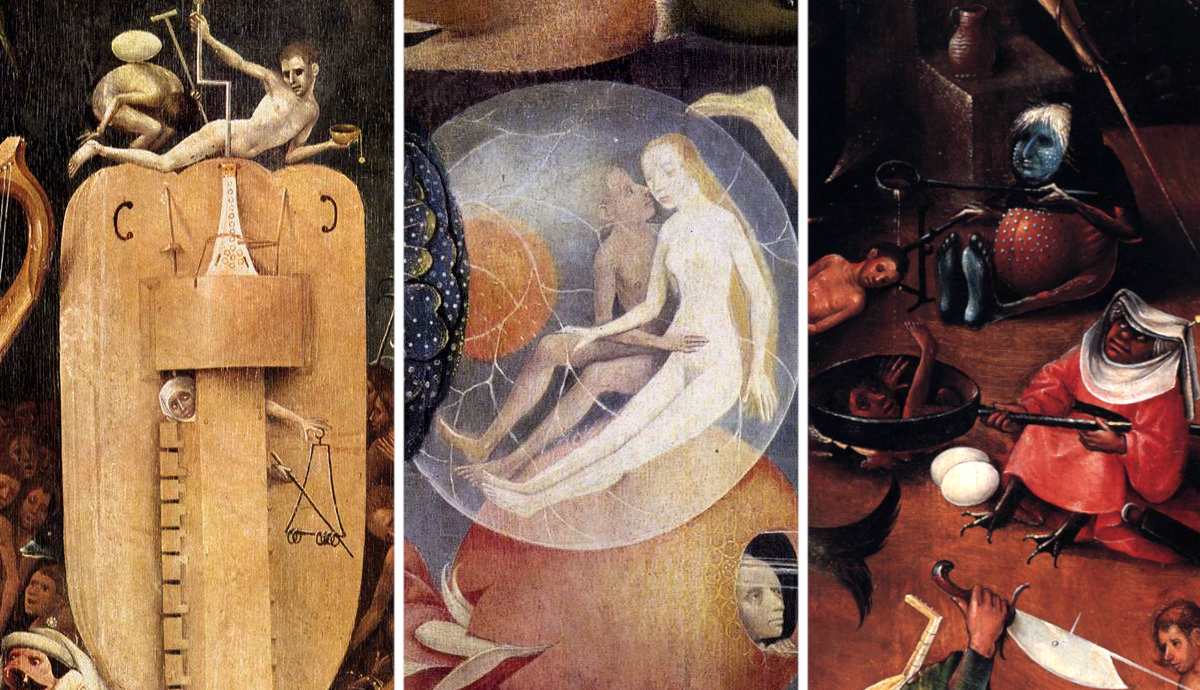
Hieronymus Bosch was a Netherlandish painter who worked during the Flemish renaissance, an artistic style of the period famous for its landscape and genre paintings. However, Bosch’s paintings are rather unique. He depicted sin, human morals, demons, monsters, and other imaginary creatures. Some called him the creator of monsters, while others thought that he was being influenced by the witches. Some even said that he was using opiates, that he was a heretic, and that he suffered from mental illness. Unfortunately, we don’t know much about Bosch’s life which makes the comprehension of his work more difficult. Bosch generally didn’t sign his works, so that is why today we can attribute only 25 paintings to him.
The Garden of Earthly Delights by Hieronymus Bosch

The Garden of Earthly Delights is one of the most famous paintings by Hieronymus Bosch. It’s also one of the most complex and enigmatic works belonging to the artist. The piece is a giant triptych that consists of outer and inner panels. It is believed that the triptych was produced between 1490 and 1500.

The outer part of the triptych can be seen when the triptych is closed. Here, Bosch represented the creation of the world in grisaille. Specifically, the world is represented as a fragile and delicate sphere right after the third day of creation. The light was separated from the dark, the water from the land, and nature was created, but everything looks gray as there are still many pieces missing in order for the world to be complete. In the upper left part, we can see a representation of God as a source of light.

When the triptych is opened, there are three giant panels full of color showing numerous creatures involved in different scenes. The first panel on the left side is where the story starts. In this panel, we can see a representation of the Garden of Eden, the paradise that God provided for people. In this peaceful and ideal scene, we see the moment when God created Adam and Eve. However, this harmony does not last for very long, as things get pretty weird when we look at what’s happening in the central panel.

In the central panel we see many people divided into groups. All these humans are pictured nude. They are shown involved in weird activities that consist of enjoying earthly delights and pleasures. Naked figures of women are jumping from the fountain of life, others are swimming around it, and men are seen riding animals and beasts.

Fruit is also something that we can see in many scenes portrayed in the work, some of which are pretty bizarre. For example, one person has a blueberry instead of a head. There’s also a man doing a headstand with a piece of fruit stuck between his legs.

Finally, the wilderness present in the central panel continues in the last panel of the triptych. However, the light tones are now replaced with dark ones. Joy and desire are replaced with pain and fear. This dark city in flames represents hell. There are scenes showing torture, punishments, and monsters devouring people.

Musical instruments are also present in Bosch’s famous work. It’s almost as if the music accompanies the punishment of these unfortunate souls. There’s even a giant instrument that looks like it’s trapping a person.
The Last Judgement

The Last Judgment is another famous painting by Bosch. The artist probably made this work around 1482. Today, it can be seen at the Academy of Fine Arts in Vienna. Just as in the previous triptych, there are similar structures and themes present here.

The outer face of the triptych was made in grisaille and it shows two saints. When opened, the left panel shows a green and idyllic landscape. God created Adam and Eve who we can see in the lower part of the panel.

We can also see the two of them committing the original sin by picking an apple from a tree. The story develops further, so when looking up we can see a furious angel expelling Adam and Eve from their paradise. In the central panel, we see the divine judges in the sky looking down on sinful people, who are soon to be punished in hell.

Numerous naked human figures and giant animals are all mixed together in this chaotic scene. On the left side, under a house-like structure, there’s a scene representing the sin of gluttony. We see a fat man drinking alcohol from a barrel without realizing that the liquid is coming from the backside of the devil itself.

On the roof of this house, there is a figure of a woman, calmly taking her walk without noticing a giant animal monster that is about to bite her neck. On her right, there is an animal that has a trumpet instead of a head. On the right of the house, there is a woman calmly frying human body parts while two eggs lie next to the frying pan.

The right panel represents the final destination of sinful humans from the central panel. Hell is shown as a dark city of eternal flame. The devil himself sits on a throne in a castle-like structure in the central lower part of the panel. Just above the devil, a group of nude people cries over their faith.
The Haywain

The Haywain is another triptych by Bosch. When the triptych is close we can see a man scaring away a small dog. This could mean that despite the fact that the man is old and weak, he is scaring away the sins successfully.

When the triptych is opened the story is once again divided into three panels. In the first panel on the left, we see the Garden of Eden. Warm colors dominate the panel.

These same colors and tones are present in the central panel of the triptych. This panel serves as a representation of the Flemish saying The world is like hay wain and each man takes what he can. Many figures here are trying to grab a piece of hay. This serves as a metaphor for the people who are after materialistic things in this life. On the left, we can see important figures like the King, the Pope, and the Duke trying to get a piece of hay as well. People are running around the hay wain, trying to climb it and get a piece of hay for themselves, without realizing that this is taking them straight to hell. A figure representing Jesus is shown looking down from the sky above them.

The last panel on the right is dedicated to hell. In this representation of hell, demons are building a tower, therefore hell is still in construction. There are also frightening scenes of torture and punishment pictured here.
Understanding Hieronymus Bosch

There are different interpretations of Hieronymus Bosch’s work. Some say that Bosch criticized religion because of the fear it imposed. However, knowing that Bosch formed part of the Illustrious Brotherhood of Our Blessed Lady, a religious confraternity, it is more likely that he aimed to criticize society. In a way, he wanted to warn people about the last judgment for all their sins. Sins and failure of morals were common subjects during the Middle Ages, but the form in which Hieronymus Bosch represented them is still mind-blowing. Because of their numerous hidden details and meaning, paintings by Hieronymus Bosch represent one of the most intriguing art pieces in the whole of art history.
